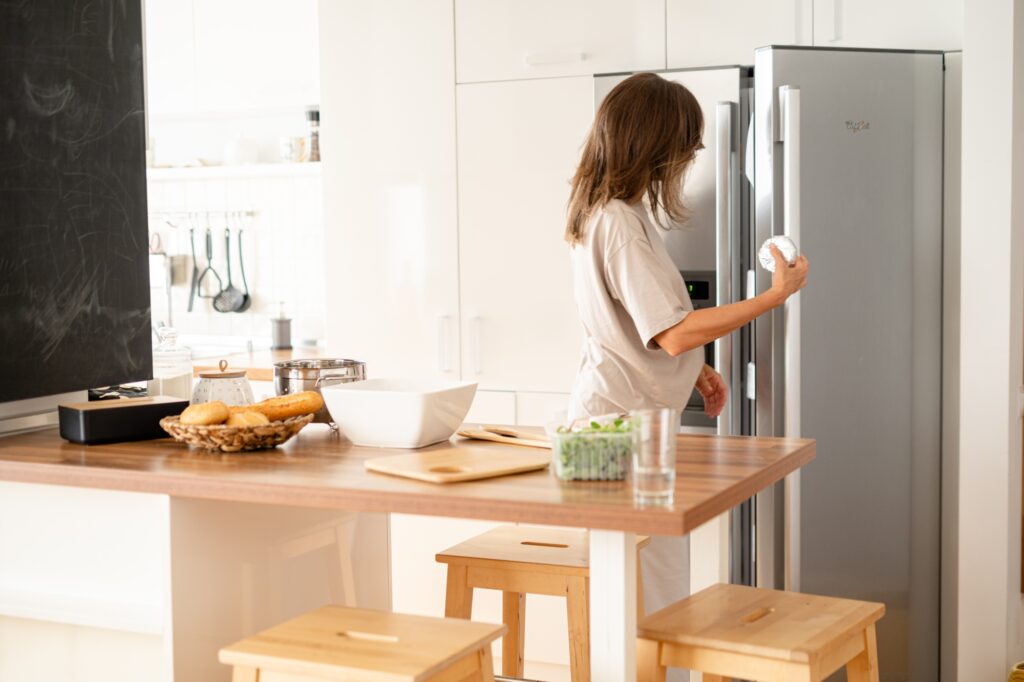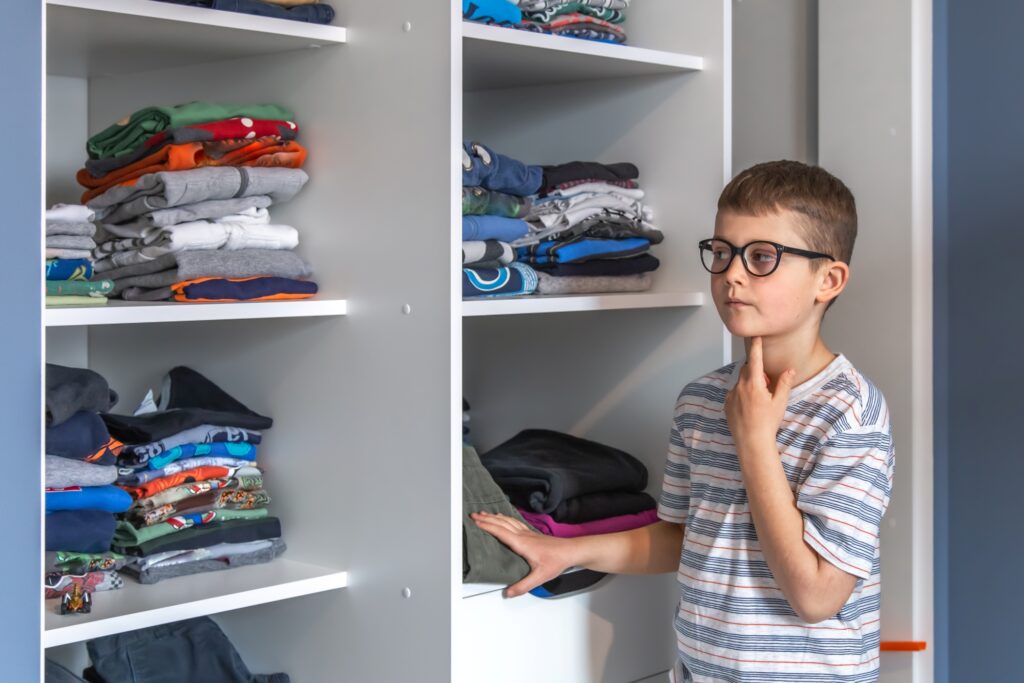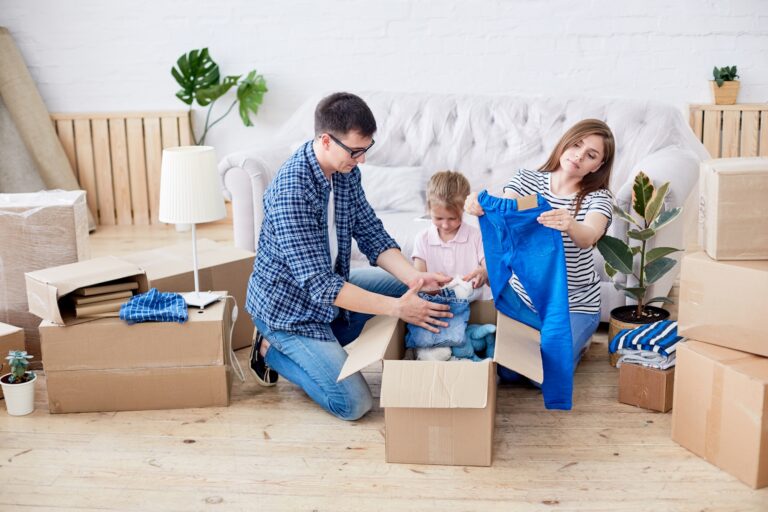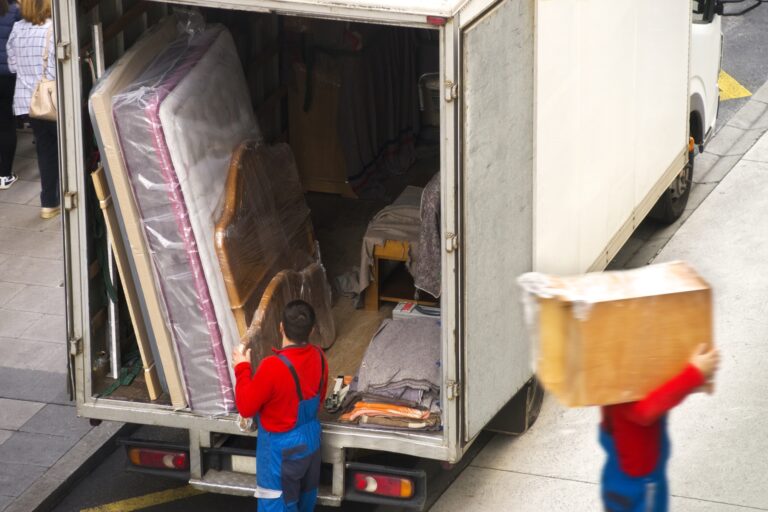Planning a move and concerned about your belongings? Learn how to pack household items safely for a move with practical tips and essential techniques. This guide covers everything from packing supplies to protecting fragile items to ensure a smooth and secure move.
Key Takeaways
- Sort and declutter your belongings at least 7 weeks before moving to reduce costs and stress, allowing ample time to decide what to keep, sell, or donate.
- Use quality packing supplies and proper techniques to keep fragile items safe during transport, ensuring that everything from delicate glassware to electronics is well-protected.
- Organise and label boxes clearly to simplify unpacking and ensure everything is easily accessible, making the unpacking process more efficient and less overwhelming.
Sort and Declutter Before Packing
Before you even begin packing, take a moment to sort through your belongings and declutter. This simple step can save space and reduce moving costs by getting rid of unnecessary items. Start by making a plan and creating a checklist to stay organised.
Begin with non-essential items from the garage, attic, or utility room, and leave frequently used items for later. Ideally, you should start packing at least 7 weeks before your moving date to allow sufficient time for decluttering and organisation.
Give Away or Sell Unwanted Items
Consider donating unwanted items to charities or thrift stores to support their efforts and reduce waste. This will lighten your load and help those in need. Alternatively, sell unwanted items through platforms like eBay, and Vinted, or participate in a car boot sale to earn some extra cash. This way, you can make a bit of money while reducing the amount you need to pack.
Dispose of Damaged Items Responsibly
For broken or unusable items, researching local recycling options can provide a responsible way to dispose of them. Recycling or properly disposing of hazardous materials, such as electronics, is crucial to protect the environment. Utilise local programs for recycling and proper disposal of unwanted items, ensuring you avoid bringing unnecessary clutter to your new home.
Must-Have Packing Supplies
Quality packing materials are crucial for ensuring the safety of fragile items during a move. Essential packing supplies include bubble wrap, packing tape, sturdy cardboard boxes, and packing paper. Durable packing tape is necessary to prevent boxes from opening during transport. Using high-quality materials from a removal company can also provide necessary packing materials, ensuring items are safely secured for transport.
Bubble Wrap and Packing Paper
When using both packing paper and bubble wrap, the paper should be the first layer to provide a solid base of protection. Bubble wrap can then be used to create a protective lining inside boxes. This combination maximises protection for fragile items during transit, ensuring they remain intact and safe from potential damage. By using both packing paper and bubble wrap, you create a cushioning effect that absorbs shocks and prevents breakage, providing extra protection for your delicate belongings.
Sturdy Cardboard Boxes
High-quality cardboard boxes are essential for preventing damage during a move, as they provide the necessary support and protection for your belongings. Opting for new boxes is recommended, as they are more reliable in supporting the weight of various items without the risk of collapsing. Investing in sturdy boxes ensures the safety of your possessions and contributes to a smoother and more efficient moving process.
Having a variety of box sizes is crucial because it allows you to accommodate different types of items effectively. This approach ensures each item is packed securely and minimises the risk of damage during transit. By using various sizes, you can optimise space within the moving truck and prevent fragile items from shifting. This strategy reduces the likelihood of breakage and contributes to a smoother moving process.
Packing Tape and Markers
Use strong packing tape to seal pack boxes securely and prevent damage during transport. Choose tape that is durable, tear-resistant, and has a strong adhesive. Using markers to label your boxes keeps track of their contents and simplifies the unpacking process, making it easier to locate your belongings. Clear labelling ensures that each box is placed in the correct room, reducing confusion and saving time during your move.
Safely Packing Fragile Belongings
Properly packing fragile items helps prevent breakage during a move. Use bubble wrap, packing paper, and old bed sheets or towels for protection. For delicate glass items, applying masking tape in an ‘X’ shape helps prevent breaks and shattering during transport.
… place ‘Fragile’ labels on multiple sides of the box to ensure careful handling from all angles.
For art pieces, use bubble wrap and double-box them for added protection. Heavy-duty picture boxes are ideal for transporting large fragile items like canvas prints and mirrors. Finally, place ‘Fragile’ labels on multiple sides of the box to ensure careful handling from all angles. This precaution alerts movers to the delicate nature of the contents, prompting them to exercise extra caution during transport.
Smart and Efficient Packing Tips
Implementing smart packing tips can make the packing process smoother and more efficient. Utilise a sorting system with specific piles to help categorise items during the decluttering process. Begin decluttering early to reduce stress as moving day approaches.
Packing one room at a time helps keep everything organised and simplifies the moving process. Use vacuum bags for soft items like bedding and clothing to save space, and store frequently used items at the front of the moving truck for easy access. For more efficient organisation, consider these packing tips for moving.
Roll Clothes to Save Space
Rolling clothes instead of folding them saves space and can reduce the number of packing boxes needed. You can leave clothes on hangers. Cover them with a bin bag to make packing easier. To roll clothes effectively, start by laying them flat, fold the sleeves inward, and then roll tightly from the bottom up. This method saves space and prevents wrinkles, making it an efficient way to pack clothing items for your move.
Utilise Drawer Space
Drawer space can be used to pack smaller items, maximising packing efficiency and reducing the number of boxes required. Keep the contents of drawers intact by wrapping the entire drawer with cling film. This method saves time during packing and ensures that smaller items remain securely in place, preventing them from shifting or getting lost during the move.
Stack Pots and Pans
Pots and pans can be efficiently packed by nesting them inside each other to optimise packing space. Stacking them inside each other is the recommended method for packing pots and pans. Using multiple smaller heavy boxes for heavy items makes them easier to handle and reduces the chance of injury. By distributing the weight across several boxes, you can move heavy items more safely and efficiently, minimising the risk of strain or damage during the move.
Handling Heavy and Oversized Items
Handling heavy and oversized items requires extra care. Reinforce the bottom and sides of boxes with heavy-duty packing tape before packing heavier items. Double-walled cardboard boxes are ideal for packages weighing over 10 kg to prevent breaking under pressure. Avoid overloading boxes when packing large items to prevent damage when lifting them or if the box breaks.
Old bedding can help wrap furniture to protect it from scratches during the move. Keep appliances in their original boxes for optimal protection during transit. For moving large appliances, using a jack can facilitate lifting them safely without risking injury.
Packing Special Items
Certain items require special attention when packing. For valuable or antique books, a climate-controlled storage unit is recommended to prevent damage. Earrings can be secured by piercing them through a foam sheet and using tape for dangly types.
Store rings in a paper-lined egg box to prevent them from getting lost or damaged. Art and antiques should be wrapped with foam padding or bubble wrap and placed between cardboard sheets before putting them into a box. Seasonal decorations can be stored in clear plastic bins for easy identification and access.
Moving Your Kitchen Appliances

Moving kitchen appliances involves thorough preparation. Clean appliances to avoid bringing dirt into your new home. For refrigerators, defrost and clean them at least 48 hours before moving. Use old newspapers around the freezer to absorb water from melting ice during defrosting.
Secure loose parts to prevent damage during transport by wrapping them and placing them in separate bags. Power cords should be secured with rubber bands or zip ties to prevent them from scratching appliances.
Using Professional Movers
Professional movers provide specialist blanket wraps for furniture, ensuring protection during transit. They also offer heavy lifting assistance, helping to avoid injuries and damage. Professional movers bring expertise and ease when moving large appliances, making the process more efficient and safer.
Organising and Labelling Your Boxes
Organising and labelling your boxes is key to a smooth move. Labels or markers identifying box contents help keep items organised during the move. Different colours for labels facilitate quick identification of boxes and their contents.
A colour-coding chart can assist in guiding movers and ensuring boxes are placed in the correct locations. An inventory list helps track and manage fragile items and their respective boxes during the move.
Label Boxes by Room
Labelling each box with its designated room simplifies the unpacking process. Proper labelling ensures movers or helpers know where to place each box, minimising confusion. Ensure that labels are clear and legible, preferably using bold lettering for easy identification.
Colour-Coding System
Colour coding helps quickly identify boxes and their contents, streamlining the moving process. Each box should be labelled with a specific colour corresponding to a designated room or category, making unpacking easier. To enhance organisation, consider numbering the boxes and creating an inventory list alongside the colour-coding system.
Numbering and Inventory List
Unique numbers on boxes allow for easier tracking and organisation, especially for valuable items. A detailed inventory list with box numbers ensures all items are accounted for during the move. This enhances tracking and organisation, ensuring nothing is lost.
NOTE
Organising and labelling your boxes is essential for a seamless move and hassle-free unpacking. Use clear labels, a colour-coding system, and an inventory list to keep track of your items, ensuring each box is placed in the right room and nothing gets misplaced.
Create a Box for Essentials
An essentials box is crucial for a smooth transition. Include items like a toothbrush, phone charger, laptop, change of clothes, towel, essential kitchen items, and important documents. Prioritise essential items like your bed and kitchen utensils for immediate access upon arrival. Compile an essentials bag or box and keep it with you during the move.
Important Documents
Keep essential documents like passports, financial statements, and medical records accessible during a move to ensure they are within reach when needed. It’s important to include insurance papers and any move-related contracts in your essentials box for easy access, as these documents may be required at various stages of the moving process. By organising these crucial documents in one place, you can avoid unnecessary stress and ensure a smoother transition to your new home.
Overnight Bag
Having a well-packed overnight bag helps ease the transition into your new home and ensures you are comfortable upon arrival. Include essentials such as toiletries, a change of clothes, pyjamas, basic medications, and snacks. This ensures you have everything you need for a comfortable first night in your new home.
First Aid Kit
A first aid kit ensures you’re prepared for minor injuries during the moving process. Include items like band-aids, antiseptic wipes, and pain relievers. This basic supply can handle minor injuries, offering immediate relief and support during the move, which provides peace of mind for unexpected mishaps. Having a well-stocked first aid kit ensures that you’re prepared for any small accidents that may occur, allowing you to focus on the moving process with confidence.
Hiring Professional Packers
Professional packing services can dramatically reduce stress during the moving process. These services offer extra protection for specialist items, securing fragile art and antiques for safe transport. Professional movers significantly reduce the physical burden on individuals, allowing for a quicker and safer moving house process.

Full-Packing Service
Full-packing services involve professionals handling every aspect of the packing process, from sorting and organising to wrapping and boxing your household items. This comprehensive service saves time and effort and ensures that your belongings are packed securely and efficiently, reducing the risk of damage during the move. By allowing professionals to manage the packing process, you can focus on other important aspects of your move, such as coordinating logistics and settling into your new home.
Part-Packing Service
Part-packing services involve professionals packing only specialist or breakable items. These services are ideal for those who need help with specific items while still handling most packing themselves. This option is also more cost-effective compared to a full-packing service, offering a budget-friendly alternative for those who want to save money. By opting for a part-packing service, you can enjoy professional assistance for delicate items while still managing most of the packing.
Cost vs. Time Savings
Hiring professional packing services can alleviate stress and streamline the moving process, providing peace of mind to the homeowner. These experts bring specialised skills and packing materials to ensure your belongings are securely packed, reducing the risk of damage during transit. Although hiring professional services incurs upfront costs, the time saved and reduced risk of damage can offset these expenses in the long run.
By entrusting the packing process to professionals, you can focus on other crucial aspects of your move, such as coordinating logistics and settling into your new home. Investing in professional packing services can lead to a more efficient and stress-free moving experience, making it a valuable consideration for those embarking on a house move.
Summary
Moving to Balham can be a smooth and stress-free experience with the right preparation and packing strategies. By sorting and decluttering early, using quality packing materials, and organising your boxes effectively, you can ensure that your belongings arrive safely at your new home.
Don’t forget to create an essentials box and consider hiring professional packing services to save time and reduce stress. Remember, the key to a successful move is planning and organisation. Apply these packing tips and enjoy the journey to your new home in Balham. Happy moving!
Frequently Asked Questions
How long before the moving date should I begin packing?
It’s best to pack about 7 weeks before your moving date to give yourself enough time to declutter and get organised. This way, you’ll feel more prepared and less rushed!
What are some essential packing supplies?
To make your packing process smooth and efficient, be sure to grab bubble wrap, packing tape, sturdy cardboard boxes, and packing paper. These essentials will keep your items safe and secure!
How can I protect fragile items during the move?
To protect fragile items during your move, wrap them in bubble wrap, packing paper, or old bed sheets, and make sure to label the boxes as ‘Fragile’ for visibility. This will help keep your precious belongings safe and intact!
What should be included in an essentials box?
Make sure to pack a toothbrush, phone charger, a change of clothes, essential kitchen items, and any important documents. Having these basics will keep you prepared and comfortable!
Are professional packing services worth it?
Professional packing services are worth it since they save you time, reduce stress, and ensure your belongings are packed securely. Investing in their expertise can make your move much smoother.







